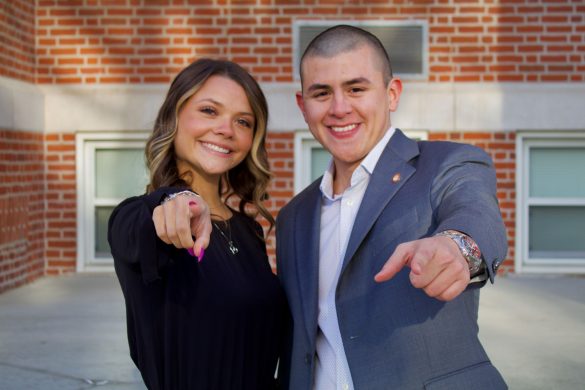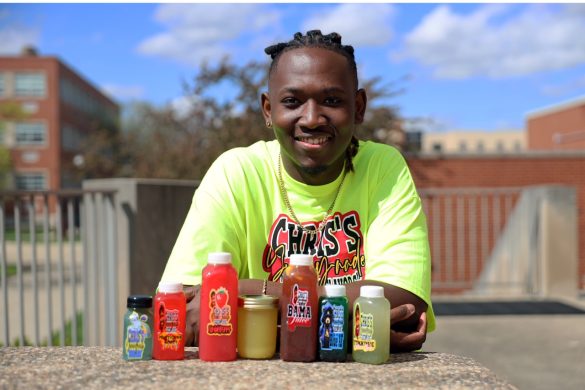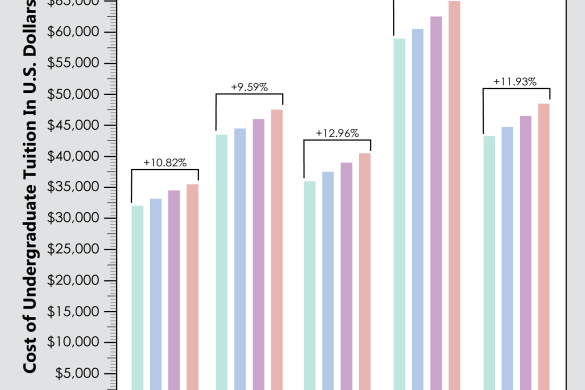The COVID-19 coronavirus has been at the center of attention for the world. From sporting events to concerts, and even entire countries like Italy shutting down, it’s effects can be felt day-to-day.
While there is currently no vaccine for the virus, the U.S. Centers for Disease Control and Prevention suggest the best way to prevent illness is to avoid being exposed to the virus. According to the CDC, the virus spreads from person-to-person by people who are in close contact with one another and through respiratory droplets that are produced by an infected person when they cough or sneeze, and those droplets enter the body of another person. The CDC also suggests that people wash their hands often, under hot water with soap for 20 seconds.
While the CDC has made recommendations saying that people should avoid others and state governors have shut down public meeting places, such as gyms and restaurants, many may not know why those orders are being put into place and why they are considered effective when it comes to fighting the virus.
According to University of Indianapolis Assistant Professor of Public Health Kara Cecil, some of these preventative measures are being taken to avoid the spread of the virus through what’s known as the breathing zone.
“When we exhale or cough, that three to six feet is how far we can expect the droplets, those respiratory secretions, to go,” Cecil said. “If you’re staying that social distance of three to six feet away, even if I cough, you should be far enough away that I won’t cough on you directly or sneeze on you directly.”
Cecil said that when people self-quarantine, it limits the spread of the virus because there is no longer other people around for them to give the virus to.
“You have an eight-month period where you have people getting the flu,” Cecil said. “Sometimes it’s serious, but most of the time it’s not and they get over it, mostly. The difference with coronavirus is that it’s spreading very, very, very quickly.”
According to Cecil, the normal flu typically can only spread to 1.4 people, but COVID-19, which is not the flu, can spread up to 3 other people. She also said that it is important to “flatten the curve,” so that the medical capacity to provide advanced medical care, hospitals, ICU’s and ventilators are not overwhelmed.
“We need to flatten that curve. If we have a lot of people still getting it, if we spread out the amount of time it takes them to contract it, that’s still winning,” Cecil said. “That’s still a benefit. We just don’t want that really serious peak. That’s what we saw in Italy and that’s why Italy is really struggling right now. They had that huge peak and it completely surpassed what they could treat and medical facilities.”
Cecil said she believes that the total amount of people with COVID-19 and the total number of cases will increase in the coming months as the country deals with COVID-19, but she expects that the total number of people who die from it will decrease.
“As our testing increases, that case count is going to jump up dramatically,” Cecil said. “That doesn’t mean more people died. In fact, it’ll probably tell us the opposite. If we have a lot of people who have stayed home for a couple of weeks, now they’re over it, right? They didn’t die. So actually that’s going to drop our case fatality rate.”
While this may sound concerning, Cecil said that this is already our reality, however, the current testing capacity is not large enough to reflect that. As of April 1, Indiana is reporting 2,565 positive cases of COVID-19 and 65 deaths associated with the virus, according to the Indiana State Department of Health. So far, at least 14,375 people have been tested for the virus.
As for life after COVID-19, Cecil said that there might be some changes around UIndy, such as cleaning protocols because the virus does not live as long on surfaces such as copper or silver. However, there are more likely to be changes in human behavior, she said.
“I think in this country we have a lot of expectations that you show up to work or you show up to class,” Cecil said. “You could be sneezing and having a fever, but you show up, that’s what we do. We might see some change in culture on that. Where if you aren’t feeling well, actually that is a problem and we want you to stay home.”
Cecil also said that during this time, if you feel sick and you would not have gone to the doctor before COVID-19, you should not go to the doctor now.
“As we are ramping up our testing, if you wouldn’t go to the doctor or the emergency room for your cold-like symptoms, you don’t need to go in the days of coronavirus,” Cecil said. “If you have a fever and a little cold and a sore throat, you don’t need to go. If you wouldn’t go to the doctor for that a year ago, you don’t need to go today.”

For our latest coverage of the COVID-19 coronavirus’ impact on the University of Indianapolis, go to http://reflector.uindy.edu/tag/covid-19/.








